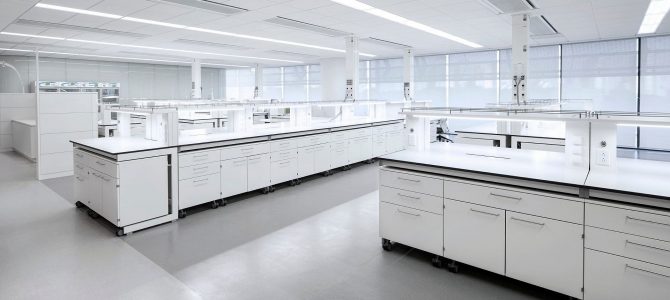Biology is the study of living things and their places in the world. So, everything that has to do with this field of science must be closely related to these two things. Biology is also the same thing as labs. This seems to be true because most scientific research and observations of objects are done in the lab.
When working in the lab, a researcher has to pay attention to both the scientific method and the safety of the work environment. Here are some things to remember when working in the lab.
SAFETY SIGNS FOR WORKERS
The safety symbol is the first thing you need to know about workplace safety in a biology lab. Most chemicals have these symbols on them.
The goal is to keep everyone in the lab, including researchers, safe. Here is a picture of a chemical symbol that you need to know.
Here is a description of what the safety signs in the lab mean.
1. Flammable. The first symbol looks like a fire and says “flammable.” This fire symbol can be used to label chemicals like alcohol, ketones, and ethyne gas.
To deal with chemicals that can catch fire, keep them away from sparks or metals that can transfer heat.
2. Explosive. An explosion is a symbol of chemicals that can cause an explosion. Atomium dichromate and nitrocellulose are both chemicals that can be used to make explosives.
To take care of these chemicals, you should keep them in a place that is damp and keep them away from heat or other sources of ignition. Also, make sure the material doesn’t get hit or rubbed against anything.
3. Toxic and carcinogenic. In the next laboratory, the safety sign is a picture of a skull and bones. This symbol means that the chemical is dangerous and could cause cancer. Mercury, cyanide, phenol, and sulfuric acid gas are all chemicals that belong to this group. You shouldn’t swallow, breathe in, or put these things on your skin. Also, make sure you don’t come into direct contact with these chemical fumes while you’re in the lab.
4. Causes irritation and poisoning. Chemicals that can irritate the skin or kill you usually have a black cross on them. Chloroform, sodium hydroxide, but alone, bromine vapour, hydrogen peroxide, and chlorine gas are some of these chemicals. When you’re working in the lab and using these chemicals, make sure the fumes don’t touch your skin, get in your mouth, or go up your nose.
5. Corrosive. Chemical droplets that are corrosive are usually drawn by hand and made with iron. Not only can these things cause rust, but they can also hurt you if you touch them without gloves. To deal with chemicals, keep them away from tools made of metal that rust easily. Also, make sure the material doesn’t come in direct contact with the skin.
6. Radioactive. The next safety sign in the lab is for chemicals that are radioactive. Most of these things are marked with a windmill-shaped picture. Uranium, plutonium, thorium, and actinium are just a few of these chemicals. Radioactive chemicals should be kept in thick bottles with tight-fitting caps. Also, make sure this material doesn’t come in direct contact with the body.
You might need a shelf or storage cabinet to make sure the chemicals are in the right place. To get the best lab furniture, you can place an order at MDC. Click lab furniture manufacturers malaysia.
